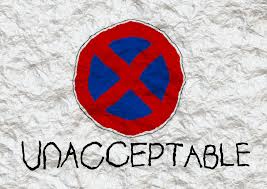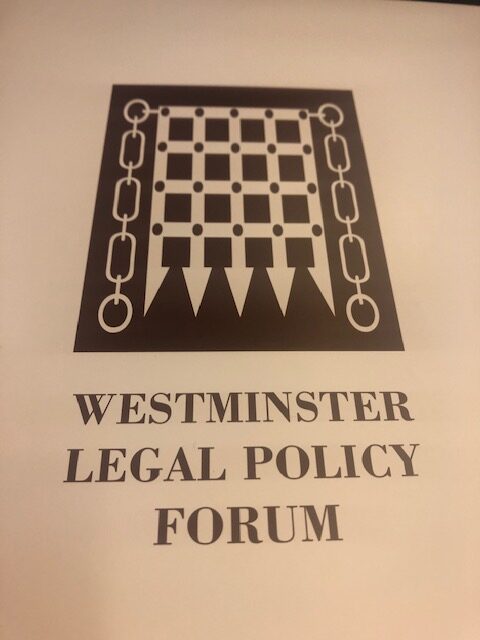This is a post by Sarah Phillimore
I have written generally on the issue of media reporting from family cases and also of my growing disenchantment with the ability or even the will of many journalists to report fairly and accurately, even with the information right in front of them. I had always naively thought that journalists investigated what was actually happening and reported on that – but that naivety cannot survive the reality that too many now appear to approach the family justice system looking for facts to fit a pre-determined theory.
Andrew Norfolk’s ‘Muslim Foster Carer’ report was one of the more serious examples of journalistic failure in this regard, but there are sadly many others.
However, regardless of what opinion I hold of journalists, its clear that the issue of greater transparency in the family courts and what can be reported about what happens there, is not going away; and nor should it. It is right that we are able as a society to understand the mechanisms of such an important element of it. I agree that people and organisations that go unchallenged have serious potential to fall into some very bad habits indeed.
I do however remain uneasy that the present push to simply make more information available is not the way to go about it; not without some greater reassurance that those trusted with the information will use it to inform debate rather than stoke up the fires of their own particular prejudice. Because the huge problem with this is that they want to use actual, identifiable families and children as their kindling.
We have to be willing to weigh the rights of parents and children to keep their painful private histories private, as against the rights of journalists or bloggers to promote any particular campaign.
So I am going to look in particular at the procedural mechanics of how journalists or legal bloggers may be involved in family proceedings and what you should do if you object to them reporting on your case or even attending your case at all.
At the time of writing (March 30th 2020) the UK is in its second week of ‘lock down’ during the COVID 19 global pandemic so the situation is of course made even more complicated by the prospect of remote court hearings via telephone or video link. Hopefully this situation will resolve in time.
The right of journalists and bloggers to attend court – yes they can.
This is hopefully now NOT controversial. Journalists and legal bloggers have a right to come into a family court. Rule 27.11 of the Family Procedure Rules 2010 allows ‘accredited journalists’ – those holding a UK Press Card – to attend private family hearings. Since October 2018, this rule extends to cover ‘legal bloggers’.
FPR 27 refers to “duly accredited representatives of news gathering and reporting organisations” – I shall use the shorthand term ‘journalist’ throughout.
However, the right to attend hearings does not confer a right to report on proceedings or publish details of proceedings. There is a clear tension between the right of journalists to report about court hearings and the right of the parties – particularly children – to keep probably very sensitive and upsetting material out of the public domain.
See section 12(1) of the Administration of Justice Act 1960 and Children Act 1989, s 97(2). These Acts provide exceptions to the general principle in favour of open justice. The court may also relax or restrict reporting restrictions in appropriate cases using its inherent jurisdiction. These matters are all covered in more detail here.
The guidance of the President of the Family Division, issued on 3rd October 2019, sets out the relevant legal and procedural considerations for the court, where issues arise about extending or limited what can be reported in a family case. As a matter of substantive law, the court will have to carry out a ‘balancing exercise’, with an ‘intense focus’ on the likely competing rights before it. These will probably involve (but are not restricted to) consideration of ECHR Articles 6, 8 and 10 – the right to a fair trial, right to privacy and right to freedom of expression.
The President’s guidance refers to a useful summary of required balancing exercise as set out at paragraph 22 of Re J (A Child) [2013] EWHC 2694 (Fam).
The best interests of any child involved in the proceedings are not ‘paramount’ in this argument, but will be the court’s primary consideration.
If no agreement can be reached, the court should hear submissions and replies, and give a judgment on the application. This doesn’t have to be a ‘full’ judgment but it must contain enough information to allow the parties to understand how the Judge got to his or her conclusions. See Re W [2014] EWCA Civ 1303 at para [49].
I don’t want journalists to report about my hearing. What can I do?
There is a presumption that journalists may attend family court hearings but still clear and significant limitations on what they can report and what documents they can see.
The court has even wider powers – it can exclude journalists from all of part of any hearing entirely – see FPR r 27.11(3). At any stage of the proceedings the court can decide not to allow journalists or other reporters to attend a hearing or part of a hearing if the following test of necessity is met:
- in the interests of any child concerned in, or connected with, the proceedings;
- for the safety or protection of a party, a witness in the proceedings, or a person connected with such a party or witness; or
- for the orderly conduct of the proceedings; or
- justice will otherwise be impeded or prejudiced.
The court can make this decision on its own initiative or after representations by any party, witness, child’s guardian or the child, if of sufficient age and understanding.
What is key however, is that the court must give an opportunity to any member of the press who is present an opportunity to make representations.
So if the journalists have turned up at the hearing, it seems pretty straightforward. You can make your application then and there and everyone is present to hear what is said and respond to it.
However, more significant problems arise if you want to make an application before any hearing has taken place.
But what if I want to exclude journalists before the hearing starts?
Applying to exclude all and any representatives of media organisations is clearly a serious thing and you will need to make that people who want to object, have a proper opportunity to do so. We now need to examine the procedural issues, rather than those of of substantive law and proportionality.
You will need to think carefully about this. Attempting to exclude the press may in fact just alert journalists to your case who otherwise would not have known about it. But if you consider press interest is inevitable and would be harmful, you may need to make an application in advance of the hearing. The Practice Direction 12 I comments that journalists are used to weighing up information in a short period of time so there may be more leeway for less notice to be given – but unless its an emergency you will need to make your application in sufficient time before the hearing.
The President’s Guidance sets out a summary of what you need to do at para 6:
Guidance as to the procedure for applying for RRO’s [Reporting Restrictions Orders] in the Family Division founded upon ECHR Convention rights can be found within FPR 2010, PD 12I and a CAFCASS Practice Note: ‘Applications for Reporting Restrictions Orders’(as updated in 2015). The application must be made in the High Court and notice must be given to the press through the Press Association (‘PA’) Injunction Alert Service [Human Rights Act 1998, s 12(2)].
Section 12 of the HRA is important as it sets out that an injunction restricting the exercise of the right to freedom of expression must not be granted where the person against whom the application is made is neither present nor represented unless the Court is satisfied (a) that the applicant has taken all practical steps to notify the respondent or (b) that there are compelling reasons why the respondent should not be notified.
It is possibly to get an injunction ‘without notice’ but it is clear that the circumstances must be ‘exceptional’ when one is attempting to restrict an Article 10 right. For further discussion see Re X (A Child) (Residence and Contact) ([2009] EWHC 1728 (Fam)).
What is the Press Association Injunction Alert Service?
The Media Lawyer website explains
This service may be used to notify the subscribing media organisations of your intention to apply to the High Court for an injunction which will affect their rights under Article 10 by prohibiting or restricting reporting.
Nearly all the national media organisations have agreed to take part in the notification system.
The notification system
The purpose of the notification system is to provide a simple secure and verifiable method of sending national media organisations notice of proposed applications for injunctions, together with supporting documentation.
The notification system serves all the national media (newspapers and broadcasters) with the exception of the Financial Times and Sky News. If notice has to be served on these two companies it needs to be served on them directly. A list of those companies subscribing to this system and their contact details are at Media Organisations.
Nor does the CopyDirect service extend to local or regional media or magazines. The Practice Note (see below) states: If service of the application on any specific organisation or person not covered is required it should be effected directly. However this note does not expand on how such service is to be effective or what it means by ‘required’.
There is useful discussion from the then President of the Family Division in Re P (Enforced Caesarean: Reporting Restrictions) [2014] 2 FLR 410, FD, at [46]. This is also set out in the Practice Note below.
The President quote from a ‘most helpful note’ sent to his office by Mike Dodd in December 2013, the then legal editor of the Press Association.
“There is a page on the Injunctions Alerts Service website http://www.medialawyer.press.net/courtapplications/mediaorganisations.jsp – which lists the media organisations served, and the relevant telephone numbers, and which states at the top:’The notification system serves all the national media (newspapers and broadcasters) with the exception of the Financial Times and Sky News. If notice has to be served on these two companies it needs to be served on them directly.’
The service was also established on the basis that subscribing organisations would be taken to have been served with an application if notification was sent via the service. The system works as follows: Would-be applicants are supposed to call a number, given in the Practice Note, and speak to the Customer Services staff who deal with the service. They then send the documents, electronically (which is easier) or by fax, to the service. These documents are, if necessary, scanned to be put into electronic form, and are then distributed via e-mail alerts to the national media. Distribution is followed up by calls to each of the subscribing organisations to check that service has been received.
The service does NOT serve orders which have been obtained from the courts (despite the continuing efforts by some law firms to use it for this purpose).
The Media Lawyer site sets out the practical steps:
An applicant (or his solicitor) should telephone the Press Association’s CopyDirect service on a dedicated number – 0870 837 6429 – confirming that he wishes to apply for a reporting restriction order in the Family Division. The documentation identified in paragraph 3 of the Practice Note should then be faxed to 0870 830 6949 or emailed to the email address provided by CopyDirect when the applicant calls the service. Attachments to emails must be in Word format.
CopyDirect will, on receipt of the documentation send via either email or fax the documentation to the subscribing media organisations. CopyDirect will call the media organisations to ensure the material has been received.
CopyDirect will also confirm receipt to the applicant. CopyDirect will maintain records of notifications received and sent, including timings, for a period of three months. Copies can be made available to applicants, if required, for verification.
Operational Hours
Mon-Fri 8am-11pm
Saturday and Sunday 10am-11pm
Christmas Eve 8am-6pm
Christmas Day 9am-6pm
Boxing Day operating hours will be the same as the day on which it falls.
New Years Eve 8am-11pm
New Years Day operating hours will be the same as the day on which it falls.
There are no costs to applicants for this service.
Judges will expect applicants to have filled out the checklist for those applying for injunctions before they entertain an application. The Checklist PDF can be downloaded here
The Practice Direction 12I and Practice Note
The Media Lawyer site also provides a copy of the standard form of order to be adopted when a reporting restriction order is made in the Family Division. This is set out under ‘Further Reading’ below. It is also helpful to include an Explanatory Note . This sets out briefly what the case is about so allows journalists to make an informed decision about whether they want to object to your application or not.
The Practice Direction makes it clear such applications need to be made in the High Court. The other parties should get at least 14 days notice – Practice Direction 12C. The court may extend or shorten this time (see rule 4.1(3)(a)), using its general powers of case management. However, the case of AB in 2019, dealing with an application for reporting restrictions concerning an inquest into the death of a child, says only 3 days is required, relying on the CPR, rather than the FPR.
Methods of service are set out at Part 6 of the CPR – generally personal service, first class post or can be done electronically.
Application and evidence
The application may be a freestanding claim brought under the Part 8 procedure in the Civil Procedure Rules 1998 or it may be made within existing proceedings to which either the CPR or Family Proceedings Rules 2010 apply. I
It may be appropriate to seek a direction under CPR 39.2(4), that the identity of a party or witness should not be disclosed, and for documents to be drafted identifying individuals by initials.
The applicant should prepare
(a) the application/claim form
(b) a witness statement justifying the need for an order
(c) any legal submissions
(d) a draft order (see suggested form of this order below) and
(e) an explanatory note (an example of this can be found at the end of the suggested draft order below)
If you don’t have time to get the relevant documents together, the court will probably want you to provide a written statement as soon as you can. Unless the court orders something different, you should provide these documents on request to any person who is affected by the order. See W v H (Family Division: Without Notice Orders) [2001] 2 WLR 253; [2001] 2 FLR 927.
So how do I know who and how to serve?
The process seems relatively straightforward for those news organisations covered by Copy Direct. However, it does NOT cover the Financial Times, Sky News or ‘local or regional media or magazines’ OR legal bloggers.
There seems to be no guidance as to how a litigant in person is supposed to identify these entities and then go on to serve them. It surely cannot be proportionate to suggest that every single regional newspaper needs to be contacted to inform them that an application is going to be made to exclude them from a hearing about which they would almost certainly have had no interest in attending or reporting about.
The Practice Note isn’t much help, simply referring that service of ORDERS should be ‘effected in the usual way’ – the Media Lawyer website gives the addresses of the main news organisations on its site. However, with regard to applications to restrict attendance of journalists NOT subscribing to Copy Direct, it simply states
Appropriate local and regional newspapers and magazines should be served with application notices in the usual way
Again, it is not clear how one is supposed identify an ‘appropriate’ local/regional reporting outlet and how one is then supposed to go on to serve an entity one may not even be aware exists. Nor is it clear at all who or what now comprises ‘legal bloggers’ who may wish to be informed and how they may be contacted.
The LA in the AB case (above) served the media via Copy Direct and also the local papers in their area, which seems sensible – but the information they provided and a very sparse ‘explanatory note’ was criticised by the court.
The Media Lawyer website offers information at
www.willingspress.com
This is a subscriber website detailing comprehensive lists of UK and overseas titles (newspapers and magazines), their contact details and publishers – but at the time of writing, this link does not appear to work.
I can only hope that for litigants in person, so long as they comply with what is set out with regard to the Copy Direct notification service, and inform the Financial Times and Sky News separately, they cannot be criticised for any disproportionate breach of any journalist or legal bloggers Article 10 rights.
I will update this post if I get any better/further information.
Further Reading
(1) Model Order
IN THE HIGH COURT OF JUSTICE Case Number:
FAMILY DIVISION
[PRINCIPAL REGISTRY]
BEFORE [JUDGE] IN PRIVATE
IN THE MATTER OF THE COURT’S INHERENT JURISDICTION
BETWEEN
[ ]
and
[ ]
REPORTING RESTRICTION ORDER
IMPORTANT
If you disobey this order you may be found guilty of contempt of court and may be sent to prison or be fined or have your assets seized. You should read the order carefully and are advised to consult a solicitor as soon as possible. You have the right to ask the Court to vary or discharge the order.
EXPLANATION
- On [date] the Court considered an application for a reporting restriction order.
- The following persons and/or organisations were represented before the Court:[describe parties and their advocates]
- The Court read the following documents: [list the documents]and/orThe Court directed the [Applicant/Claimant] to file a statement no later than [date] setting out the information presented to the court at the hearing.and/orThe Court directed that copies of the attached Explanatory Note and [list any other documents] be made available by the [Applicant/Claimant] to any person affected by this Order.
- [In a case where an undertaking in damages is required by the Court:The Applicant gave an undertaking that if the Court later finds that this Order was obtained as a result of any deliberate or careless misrepresentation by the Applicant, and that this has caused loss to any person served with the Order, and that that person should be compensated, the Applicant will comply with any order the Court may make.]
- In the case of an order made without notice:This order was made without notice to those affected by it, the Court having considered section 12(2) Human Rights Act 1998 and being satisfied (i) that the [Applicant/Claimant] has taken all practicable steps to notify persons affected and/or (ii) that there are compelling reasons for notice not being given, namely: [set out the Court’s reasons for making the order without notice]
- [In the case of an application by a local authority:The Court granted permission to the Applicant to apply for the exercise of the Court’s inherent jurisdiction]
ORDER
- Duration Subject to any different order made in the meantime, this order shall have effect[in the case of an adult] during the lifetime of the [Defendant], whose details are set out in Schedule 1 to this order.[in the case of a child] until [date], the 18th birthday of the child whose details are set out in Schedule 1 to this order (’the Child’).
- Who is bound This order binds all persons and all companies (whether acting by their directors, employees or agents or in any other way) who know that the order has been made.
- Publishing restrictionsThis order prohibits the publishing or broadcasting in any newspaper, magazine, public computer network, internet website, sound or television broadcast or cable or satellite programme service of:
- the name and address of
- the [Defendant/Child];
- [in the case of a child] the Child’s parents (’the parents’), whose details are set out in Schedule 2 to this order;
- any individual having day-to-day care of or medical responsibility for the [Defendant/Child] (’a carer’), whose details are set out in Schedule 3 to this Order;
- any residential home or hospital, or other establishment in which the [Defendant/Child] is residing or being treated (’an establishment’);
- any picture being or including a picture of either the [Defendant/Child], a carer or an establishment;
- any other particulars or information relating to the [Defendant/Child];IF, BUT ONLY IF, such publication is likely to lead to the identification of the [Defendant/Child] as being [set out the feature of the situation which has led to the granting of the order].
- No publication of the text or a summary of this order (except for service of the order under paragraph 7 below) shall include any of the matters referred to in paragraph 3 above.
- Restriction on seeking information This Order prohibits any person from seeking any information relating to the [Defendant/Child] [or the parents] or a carer from any of the following:
- the [Defendant/Child];
- [the parents];
- a carer;
- the staff or residents of an establishment.]
- What is not restricted by this Order Nothing in this Order shall prevent any person from:
- publishing information relating to any part of a hearing in a court in England and Wales (including a coroner’s court) in which the court was sitting in public and did not itself make any order restricting publication.
- seeking or publishing information which is not restricted by Paragraph 3 above.
- inquiring whether a person or place falls within paragraph 3(a) above.
- seeking information relating to the [Defendant/Child] while acting in a manner authorised by statute or by any court in England and Wales.
- seeking information from the responsible solicitor acting for any of the parties or any appointed press officer, whose details are set out in Schedule 4 to this order.
- seeking or receiving information from anyone who before the making of this order had previously approached that person with the purpose of volunteering information (but this paragraph will not make lawful the provision or receipt of private information which would otherwise be unlawful).
- publishing information which before the service on that person of this order was already in the public domain in England and Wales as a result of publication by another person in any newspaper, magazine, sound or television broadcast or cable or satellite programme service, or on the internet website of a media organisation operating within England and Wales.
- Service Copies of this Order endorsed with a notice warning of the consequences of disobedience shall be served by the [Applicant/Claimant] (and may be served by any other party to the proceedings)
- by service on such newspaper and sound or television broadcasting or cable or satellite or programme services as they think fit, by fax or first class post addressed to the editor (in the case of a newspaper) or senior news editor (in the case of a broadcasting or cable or satellite programme service) or website administrator (in the case of an internet website) and/or to their respective legal departments; and/or
- on such other persons as the parties may think fit, by personal service.
- Further applications about this Order The parties and any person affected by any of the restrictions in paragraphs 3-5 above may make application to vary or discharge it to a Judge of the High Court on not less than [48 hours] notice to the parties.
SCHEDULE 1
[The [Defendant/Child]’s Full Name:
Born:
Address:]
or
[Information enabling those affected by order to identify the Defendant/Child]
SCHEDULE 2
[Similar details of parents]
SCHEDULE 3
[Similar details of carers or other persons protected]
SCHEDULE 4
[Contact details of responsible solicitor and/or press officer]
Date of Order: [ ]
(2) Example of Explanatory Note
NHS TRUST X v AB
Application for a Reporting Restriction Order
DRAFT EXPLANATORY NOTE
1 AB is a child who suffers from a degenerative disease. An application has been made by the NHS Hospital Trust responsible for his care for the Court’s approval of the withdrawal of ventilation. This course is opposed by AB’s family.
2 On [date] the application will be heard by the President of the Family Division, who will give judgment in open court.
3 A Reporting Restriction Order has been [made/applied for] to protect AB’s right to confidentiality in respect of his medical treatment. This does not restrict publication of information or discussion about the treatment of patients with similar conditions, provided that such publication is not likely to lead to the identification of AB, those caring for him, the NHS Trust concerned or the establishment at which he is being cared for.
Citations: [2005] 2 FLR 111
SCHEDULE 1
[The [Defendant/Child]’s Full Name:
Born:
Address:]
or
[Information enabling those affected by order to identify the Defendant/Child]
SCHEDULE 2
[Similar details of parents]
SCHEDULE 3
[Similar details of carers or other persons protected]
SCHEDULE 4
[Contact details of responsible solicitor and/or press officer]
Date of Order: [ ]
(2) Example of Explanatory Note
NHS TRUST X v AB
Application for a Reporting Restriction Order
DRAFT EXPLANATORY NOTE
1 AB is a child who suffers from a degenerative disease. An application has been made by the NHS Hospital Trust responsible for his care for the Court’s approval of the withdrawal of ventilation. This course is opposed by AB’s family.
2 On [date] the application will be heard by the President of the Family Division, who will give judgment in open court.
3 A Reporting Restriction Order has been [made/applied for] to protect AB’s right to confidentiality in respect of his medical treatment. This does not restrict publication of information or discussion about the treatment of patients with similar conditions, provided that such publication is not likely to lead to the identification of AB, those caring for him, the NHS Trust concerned or the establishment at which he is being cared for.









